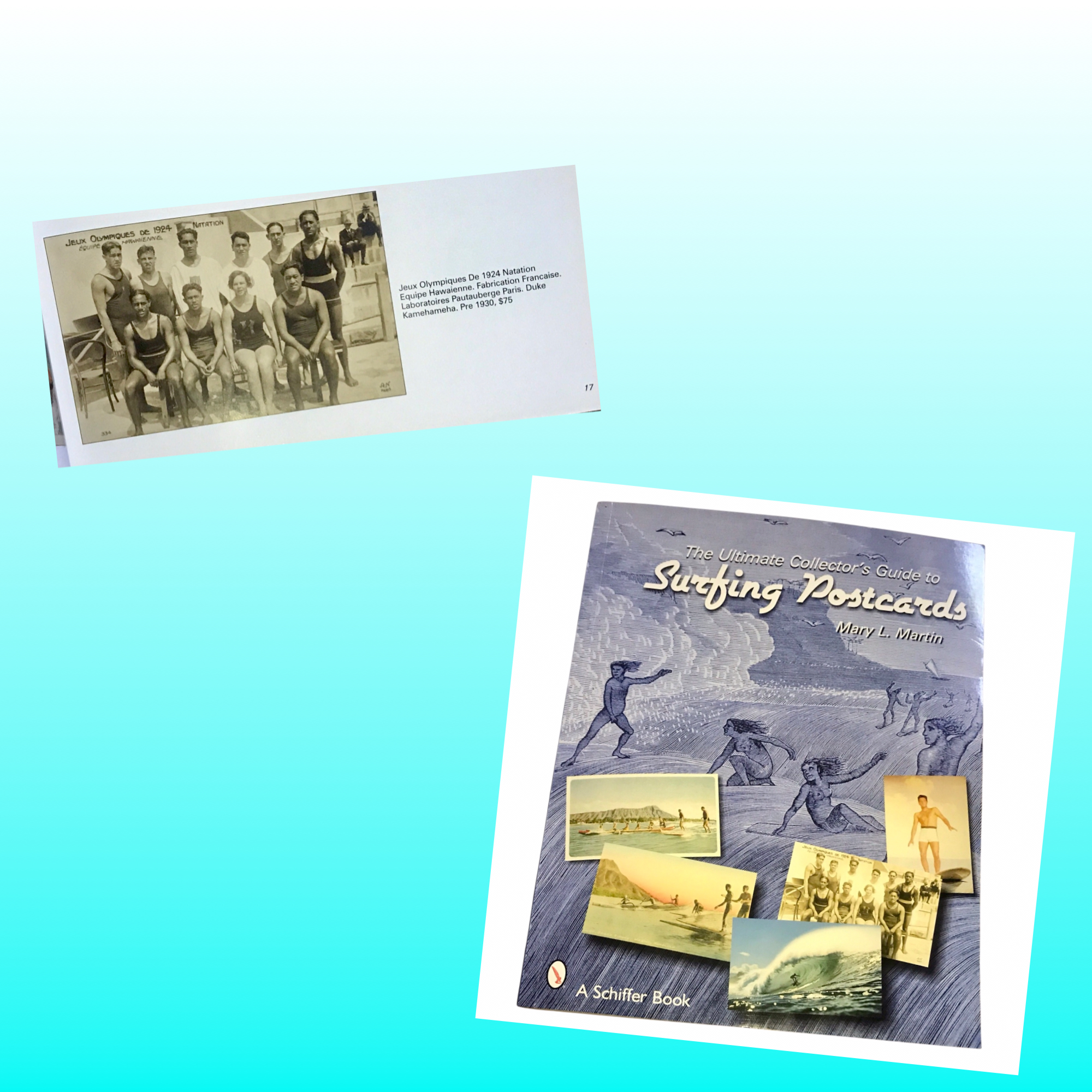As always, I find myself contemplating various topics related to Duke Kahanamoku. While I often select my subjects based on what resonates with me creatively, I remain committed to writing regardless of the challenges.
Today, I want to discuss a book titled “The Ultimate Collector’s Guide to Surfing Postcards,” which I first discovered on ThriftBooks.com. Unfortunately, the description was vague, and the sole image provided was merely the book cover.
Seeking further information, I turned to Amazon, where I encountered a similar situation—again, just a cover image and limited description. However, the reviews from previous buyers, despite the last one dating back to 2013, offered some insight.
One review particularly caught my attention, stating, “I still love writing handwritten notes, and having these authentic-looking vintage postcards makes it fun for my summer jots! They’re so beautiful that I keep them by every phone in my beach house.” This reference to “authentic-looking vintage postcards” led me to believe the book contained postcard reproductions, prompting me to make a purchase.
Upon receiving the book, I was not thrilled to discover it served as a reference guide for surfing postcards, essentially a price guide. After setting it aside for a few hours, I returned to peruse its pages and was delighted to find several dedicated to Duke Kahanamoku.
One page featured an early black-and-white photograph of Duke, valued at $300, while another listed a 1930 photo by Tai Sing Loo from the chrome era with a price of $8.
Additionally, there was a First Day Issue stamp from 2002, also priced at $8, which I happen to own, as well as a postcard depicting the statue of Duke on Kuhio Beach in Waikiki for $5.
Interestingly, there is a section on surfing celebrities also included a postcard of Robert Conrad for $8, a charming image of Shirley Temple in a bathing suit with a surfboard, labeled “Aloha Capt. Shirley,” priced at $7, and a postcard of Elvis Presley standing on a surfboard from 1961 for $10. However, I sensed something was amiss and decided to investigate further.
The filming of “Blue Hawaii” took place in 1961, with Elvis arriving in Hawaii in March. The movie was shot at various locations across Oahu and Kauai, including the Coco Palms Resort, Waikiki Beach, Diamond Head, Mount Tantalus, and Hanauma Bay. Although Elvis participated in surfing scenes, he was not an avid surfer in real life.
This led me to ponder whether Duke Kahanamoku and Elvis Presley ever crossed paths. Did Duke welcome Elvis upon his arrival, or did they meet at some point later? Despite extensive research, including inquiries into AI-generated insights, no definitive evidence of their meeting has surfaced, leaving the question unanswered.
Before concluding my examination of the book, I discovered another image of Duke alongside his teammates, including his two brothers.
The caption was in French, stating, “Jeux Olympiques De 1924 Natation Équipe Hawaïenne.” What intrigued me was the mention of Duke; however, the text referred to him as Duke Kamehameha instead of Duke Kahanamoku, a detail visible upon zooming in on the image. I have yet to see this particular postcard, and if it does exist, it could command a significant price due not only to Duke’s fame but also the error on the card.
Thanks to this book, I’ve uncovered a fascinating new interest: collecting surfing postcards.
Recently, I acquired a photo album and began sorting my postcards, discovering numerous surfing-related items to include in the album. Additionally, I found vintage advertising postcards and magazine clippings that will enrich this new hobby.
I also came across a surfing magazine from 1999, filled with articles and photographs, which I plan to add to the album.
Moreover, I am eagerly awaiting the arrival of a Hawaiian Punch postcard featuring the iconic Puncy character standing next his surfboard, a registered trademark of Dr. Pepper and Seven Up Inc.
The cover of my surfing photo album features Duke riding his surfboard from 1914, reprinted from the early 2000s for the “Mid-Pacific Carnival.” Another version I own, kept in a separate binder, dates back to 1992.
I have no intention of retaining this surfing album, as I believe it will be better appreciated by a dedicated collector.
For now, I bid you “Aloha” until next time.
